Growing veggies is a great way to make fresh produce accessible for your household. And pets are a big part of your life. Here are some vegetables to grow that are just as good for your dog as they are for you.
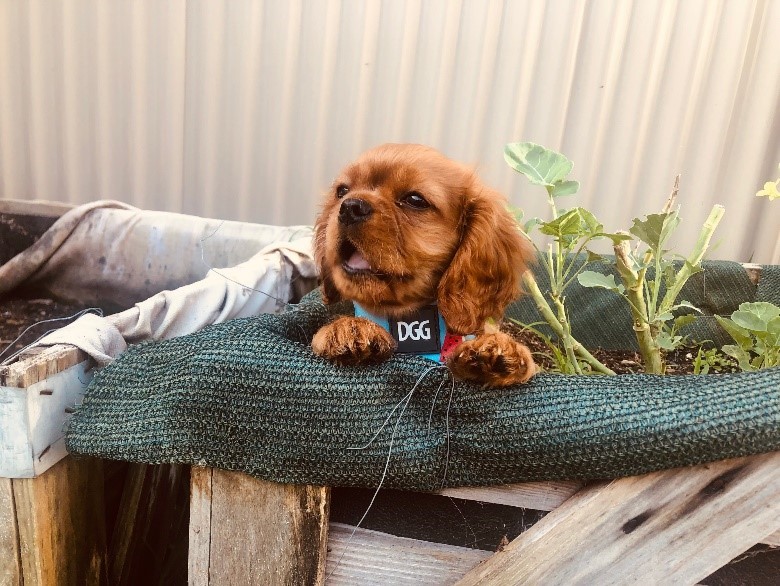
Growing your own food means easy access to plenty of fresh options. It’s a great way to add a natural hit of fresh fruit and veggies to your own diet, and that of your household.
But is your veggie patch right for all members of the family?
When it comes to our 4-legged friends, vegetables can be a good way to add variety to their food, and can make up a portion of a quality, balanced diet. Some vegetables are better than others – and some are even toxic for our pets.
Let’s explore the top crops to plant that will cater for you and your dog.
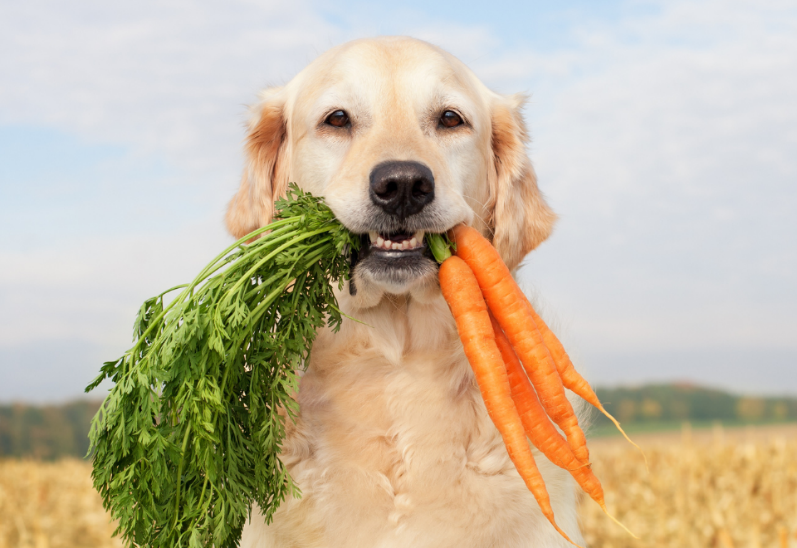
A carrot chew
Carrots you have grown yourself always seem somehow sweeter – and your dog will think so too!
Not only are carrots okay for them to eat in moderation, but they can even be given to teething puppies to chew on.
Throw them in the fridge for a bit first and then you have a cold treat for your pup that can provide some relief for aching gums.
Carrots are a good one to grow from seed, making them an economical option. Discover more in our blog: 9 vegetables best grown from seed.

Fill the Kong… with zucchini
Zucchinis are a good option to plant because they often grow in abundance – which means there’s plenty to go around for the whole family. So, any you aren’t chopping up for fritters or a stir-fry could be eaten by your dog instead!
But keep in mind that while we like to liven up our zucchini with a bit of salt or seasoning, this is best left off for your dog.
The texture of zucchinis makes them great for squishing into a Kong, providing a challenge for your dog to try and get to them.
They’re a versatile veggie with lots of uses, discover a few ideas in our blog: 7 veggies to grow to get the most bang for your buck.
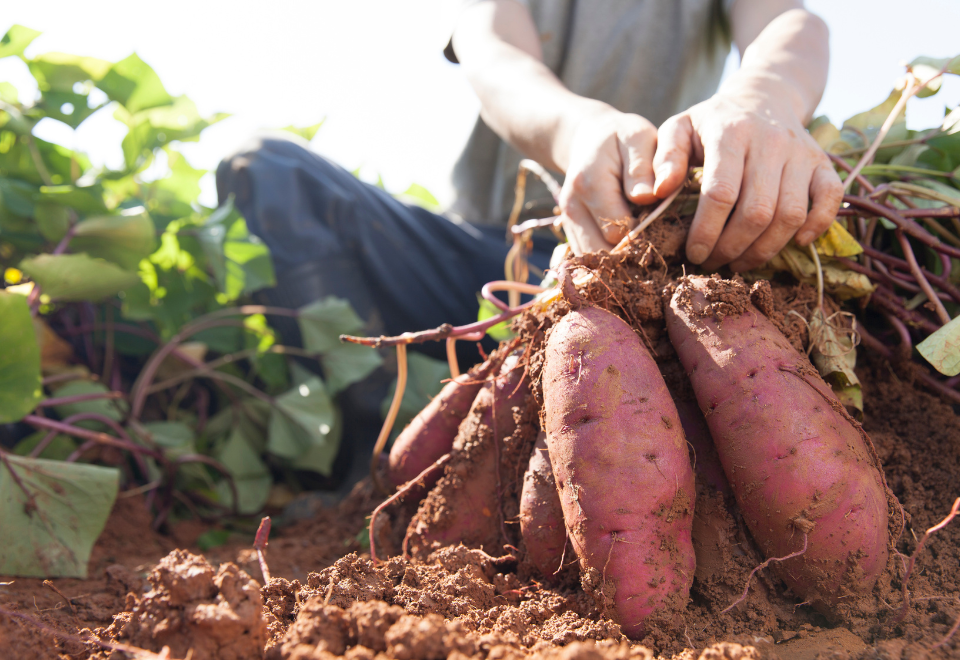
A training treat in sweet potato
Sweet potato is a fun veggie to grow and it’s safe to share with dogs, in small doses. In fact, sweet potato is often found in dog training treats.
Keep in mind that it’s still a treat food, so go easy on how much you give.
Sweet potato is generally better for dogs if it’s cooked first as it can be hard for them to digest it raw.
Your home-grown sweet potatoes can easily be turned into a chewy treat too – simply cut them into thin slices, space out on a baking tray, and leave in the oven on a low temperature for a couple of hours, until they have shrunk and some pieces have gone crispy.
Top tip: These baked treats can even be stored for a couple of weeks in an air-tight container.
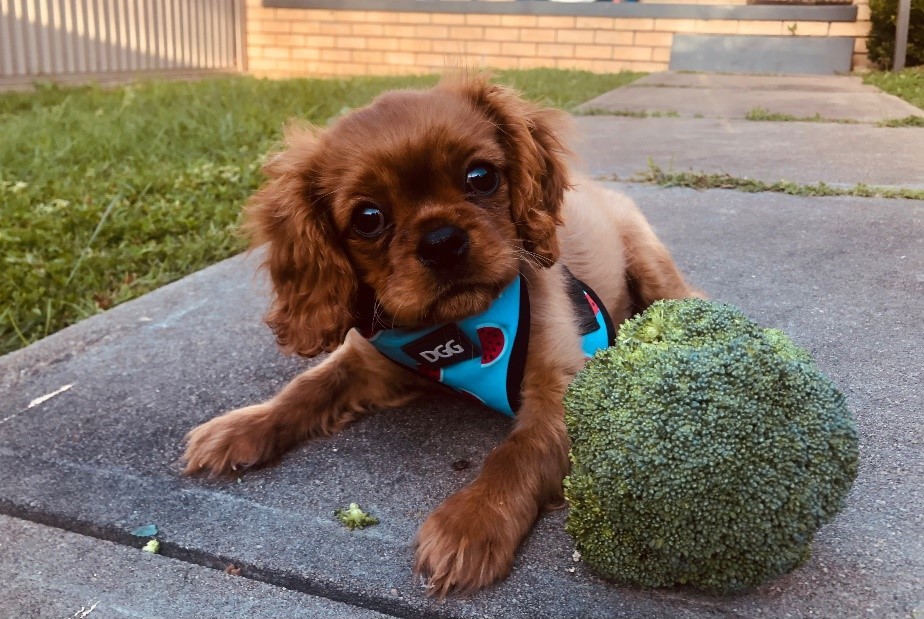
And plenty more
If you’re planning out your next veggie patch and want some other ideas on things to plant that your dog can enjoy too, you might like to consider:
- basil
- broccoli
- cauliflower
- celery
- cucumber
- green beans
- peas
- spinach
- squash
Even with these safer options, vegetables should only be consumed in moderation by our pets.
Keep in mind that every dog is different, and modifications to diet should be made in consultation with a vet.
Give it a miss – toxic vegetables for dogs
Some veggies can be toxic for our dogs – either the produce itself or the plants they grow on.
Tomatoes are commonplace for many home gardeners’ patches, but the plants themselves, as well as unripened tommies, contain tomatine and solanine, which are compounds that are toxic for our pets.
Similarly, raw potatoes contain solanine – so only cooked and skinned potatoes should be fed to dogs, and only ever in small doses as excessive carbs can lead to health issues. Better to stick to sweet potato in moderation, as it doesn’t have this compound.
Rhubarb is another one where the plant and unripened fruit can be dangerous, because of oxalic acid present before the stalk ripens.
Then we’ve got a whole family to dodge. Allium vegetables are a genus that includes onions, garlic, leeks and chives. These veggies cause damage to our pets red blood cells and should be avoided, even when cooked.
And if you’re adding a herb garden, steer clear of mint as it contains essential oils that are poisonous for dogs.
So if you’re worried that your dog might sneak into your vegetable patch and pinch some produce, or could be tempted to nibble on your vegetable plants, it’s worth either giving these a miss or making sure there’s a barrier between them and your dog.
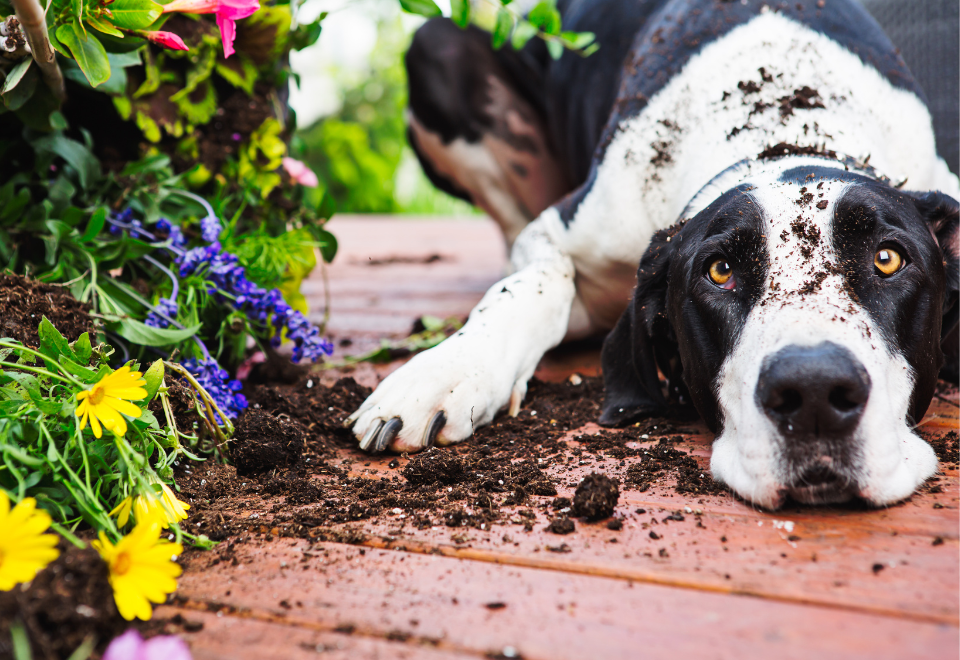
Keeping your pets out of your patch
Even if there are only safe plants present, most of the time we still don’t really want our pets getting into our veggie garden. Use either a fence or a raised garden bed to reduce access for our curious companions.
If they do like to dig, it may even be worth setting up a dedicated area in the garden for them to do so that doesn’t impact on any plants you want to keep around.
Keep in mind that if you’ve just used a fertiliser or added compost to your patch, this is going to smell pretty enticing to our dogs!
This is a time to pay extra attention to their garden access, or even try and keep them inside for a period of time, as eating fertiliser or compost is likely to give them an upset stomach.
Ready to get started with food gardening?
Are you and your pooch excited to dive into some food gardening, now that you know which options are safe?
Head to our Food Gardening hub to discover how.